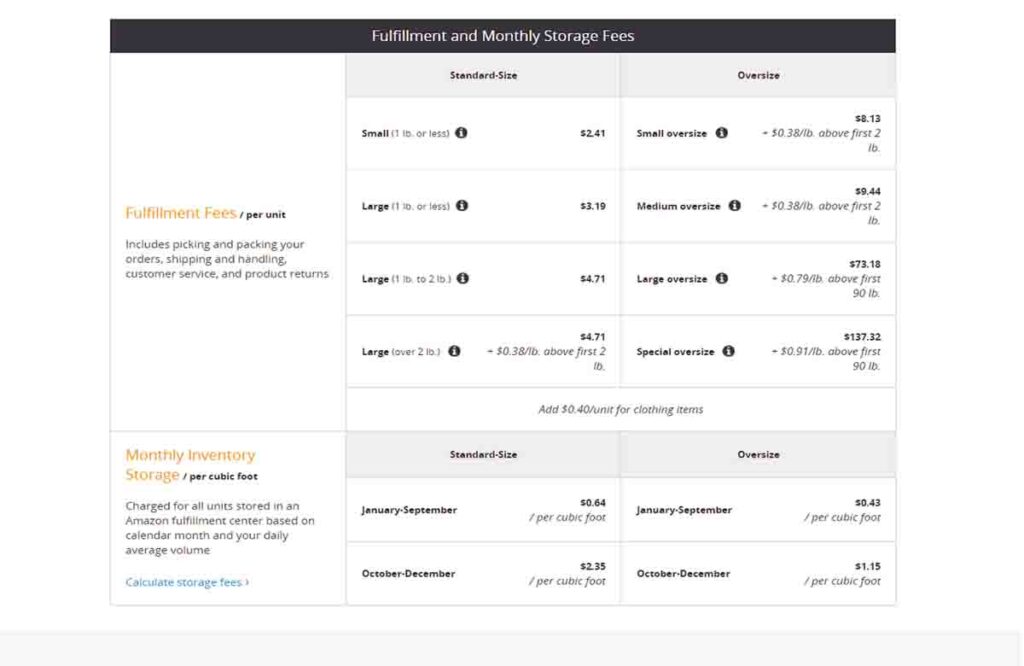
If you’re selling on Amazon, chances are you’ve heard of Amazon FBA monthly storage fees. But do you fully understand how they work and how much they can affect your bottom line? In 2025, mastering these fees is more important than ever. Whether you’re a seasoned Amazon seller or just stepping into the FBA world, this article breaks down everything you need to know to stay profitable.
What Are Amazon FBA Monthly Storage Fees?
Amazon FBA monthly storage fees are the charges Amazon imposes for storing your inventory in its fulfillment centers. These fees are based on two primary factors:
- Volume (in cubic feet) of your inventory stored
- Time of year (fees are higher during peak seasons)
Amazon calculates this on a per cubic foot basis and bills sellers monthly. The goal is simple—Amazon wants to optimize space and avoid holding on to slow-moving inventory.
2025 Amazon FBA Monthly Storage Fee Structure
As of 2025, Amazon’s storage fees are divided into two key seasons:
- January to September:
- Standard-size items: $0.87 per cubic foot
- Oversize items: $0.56 per cubic foot
- October to December (Peak Season):
- Standard-size items: $2.40 per cubic foot
- Oversize items: $1.40 per cubic foot
The dramatic fee increase in Q4 is due to high holiday demand, and sellers must plan inventory wisely to avoid unexpected charges.

Why Amazon FBA Monthly Storage Fees Matter
These fees may seem small at first glance, but they add up quickly, especially if you have excess or stagnant inventory. Ignoring Amazon FBA monthly storage fees can quietly eat away at your profits. Sellers who ignore this cost component often find their margins shrinking without realizing why.
For instance, storing 100 standard-size units occupying 10 cubic feet from October to December could cost you $24/month, versus $8.70/month during the rest of the year. Multiply that across hundreds of SKUs, and it’s clear—storage strategy is critical.
Long-Term Storage Fees (A Costly Mistake to Avoid)
In addition to monthly fees, Amazon charges long-term storage fees (LTSF) for inventory stored for over 365 days. As of 2025, this is $6.90 per cubic foot or $0.15 per unit—whichever is greater.
This fee punishes poor inventory turnover and is a major pain point for new sellers who overestimate demand or fail to run effective promotions.
Calculating Amazon FBA Monthly Storage Fees
You can calculate your estimated fees using this formula:
Fee = Volume (Cubic Feet) x Monthly Rate (based on season and size)
Let’s say your inventory occupies 50 cubic feet of space in November and consists of standard-size items:
50 x $2.40 = $120/month
Thankfully, Amazon provides a Storage Fee Report in Seller Central to help you track these costs in real-time.
How to Reduce Amazon FBA Monthly Storage Fees
Smart sellers always look for ways to cut unnecessary costs. Here are proven strategies to reduce your Amazon FBA monthly storage fees:
1. Optimize Inventory Turnover
The best way to lower fees is to maintain a healthy sell-through rate. Replenish inventory in smaller batches and avoid overstocking.
2. Use Inventory Performance Index (IPI)
Amazon’s IPI score evaluates how well you manage inventory. A score above 400 helps avoid limits and surcharges. Keep your IPI high by reducing stranded inventory, avoiding long-term storage, and improving sales velocity.
3. Remove or Liquidate Slow-Moving Stock
If a product isn’t moving, act fast. Use Amazon’s Automated Removal Program, run clearance sales, or liquidate through Amazon’s FBA Liquidations service.
4. Leverage 3PL Services
Consider storing overflow inventory with a third-party logistics (3PL) provider. Ship in smaller quantities to FBA as needed. This strategy gives you more control over costs and flexibility in how you manage seasonal stock.
5. Use Amazon’s Fee Preview Report
Regularly review your Fee Preview Report to identify high-fee items and take timely action. This tool gives you foresight and control over future charges.
Common Mistakes Sellers Make with Amazon FBA Storage
Avoid these pitfalls if you want to keep your business lean:
- Bulk shipping without sales data: Never send hundreds of units without demand validation.
- Ignoring peak season fees: Plan Q4 inventory wisely to avoid inflated charges.
- Letting products age beyond 12 months: This triggers long-term storage fees and crushes ROI.
Should You Use Amazon FBA Despite the Fees?
Absolutely—Amazon FBA monthly storage fees are a manageable cost when approached strategically. FBA gives you access to Prime customers, fast shipping, and Amazon’s trust factor. These benefits far outweigh the costs if you manage your inventory efficiently.
That said, FBA is not for everyone. If you’re selling bulky, low-turnover items or working with razor-thin margins, FBA’s storage structure may not work in your favor.
Final Thoughts
Amazon FBA monthly storage fees are one of the most overlooked costs by new and even experienced sellers. While the charges themselves are reasonable, poor inventory planning can turn them into profit killers. The key lies in strategic stock management, leveraging Amazon tools, and staying on top of data.
By mastering your storage costs, you gain better control over your business and maximize your margins. Don’t treat these fees as a nuisance—treat them as signals that guide smarter inventory decisions.


